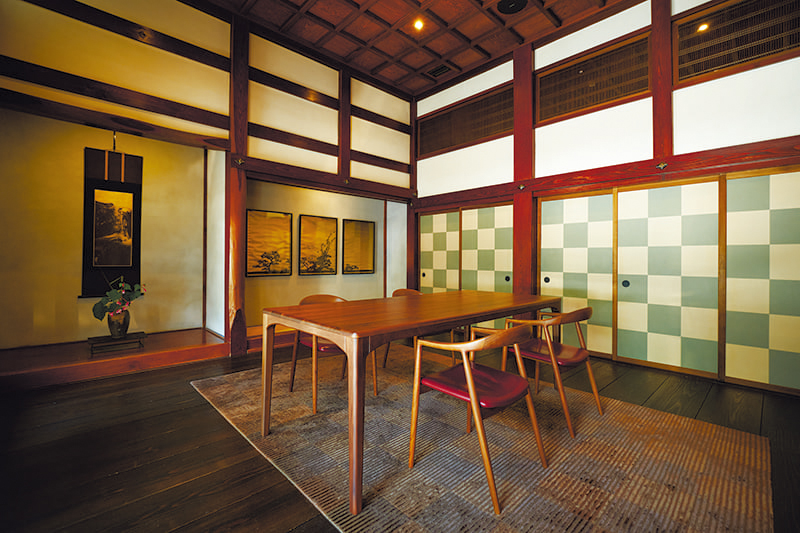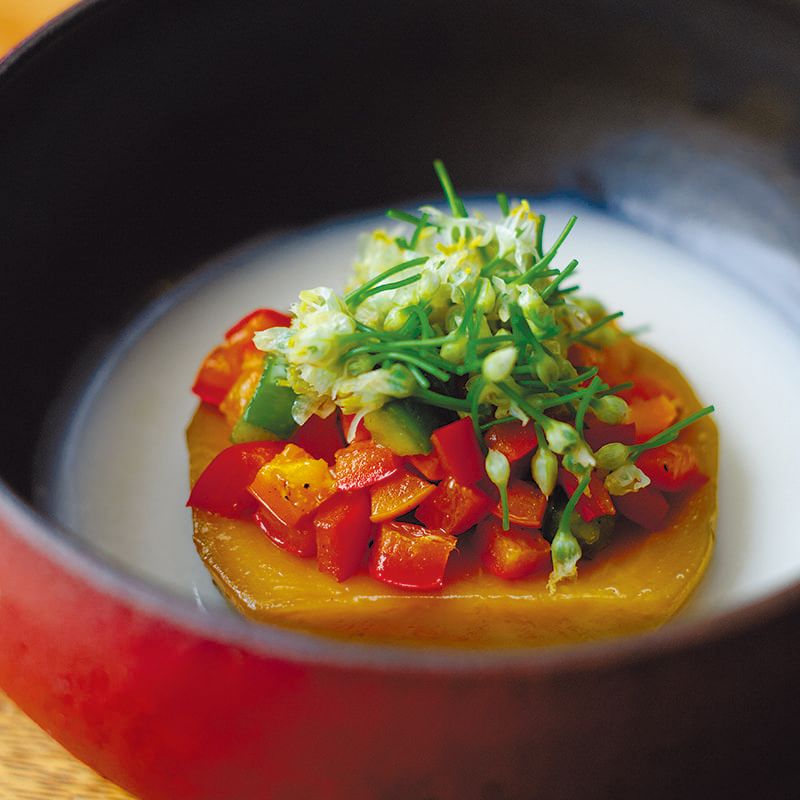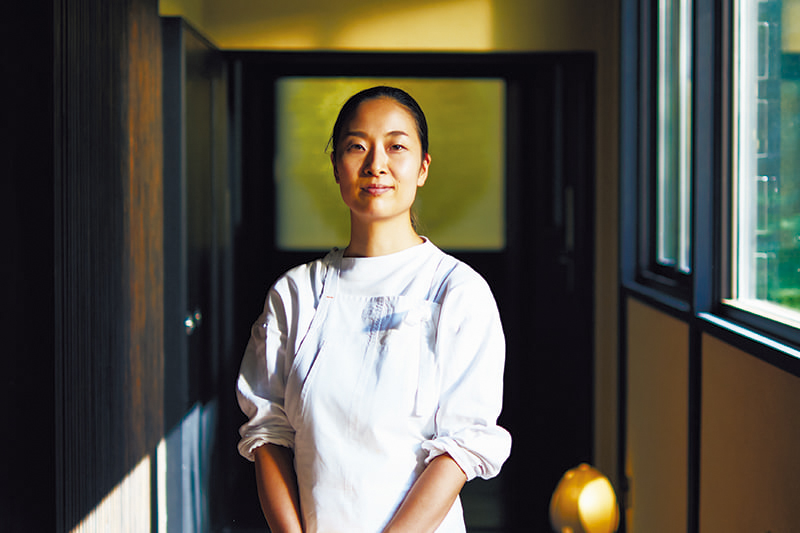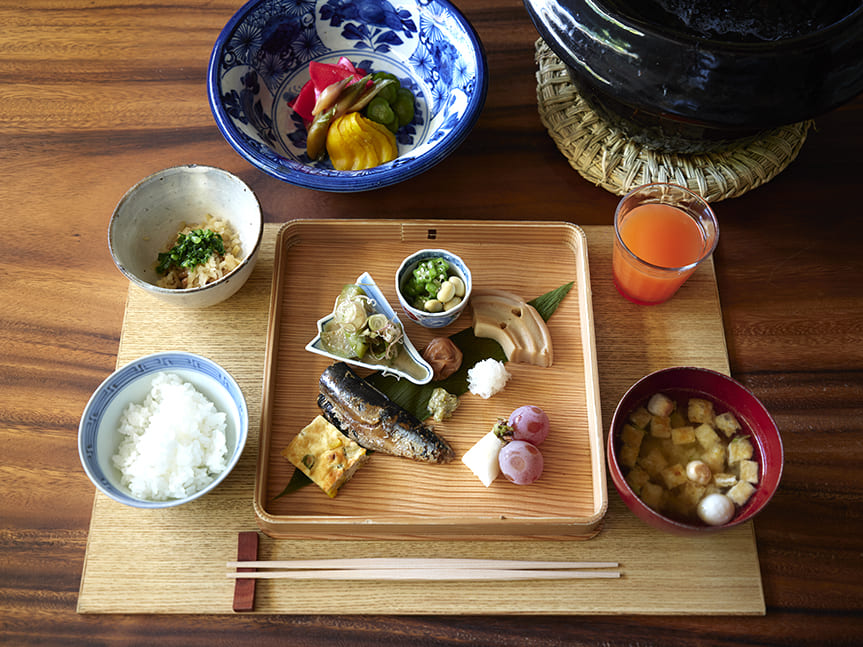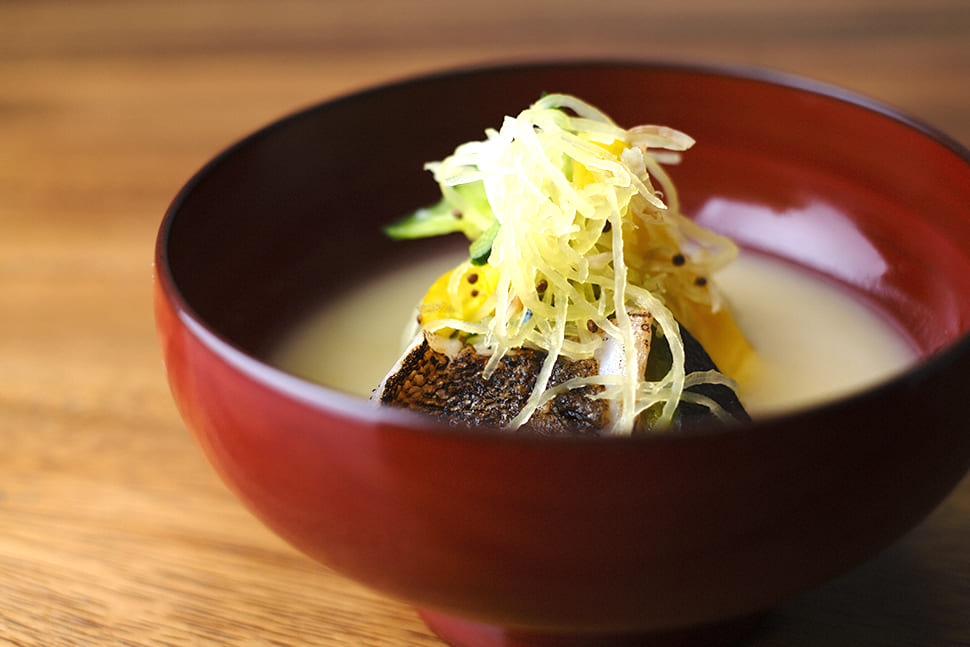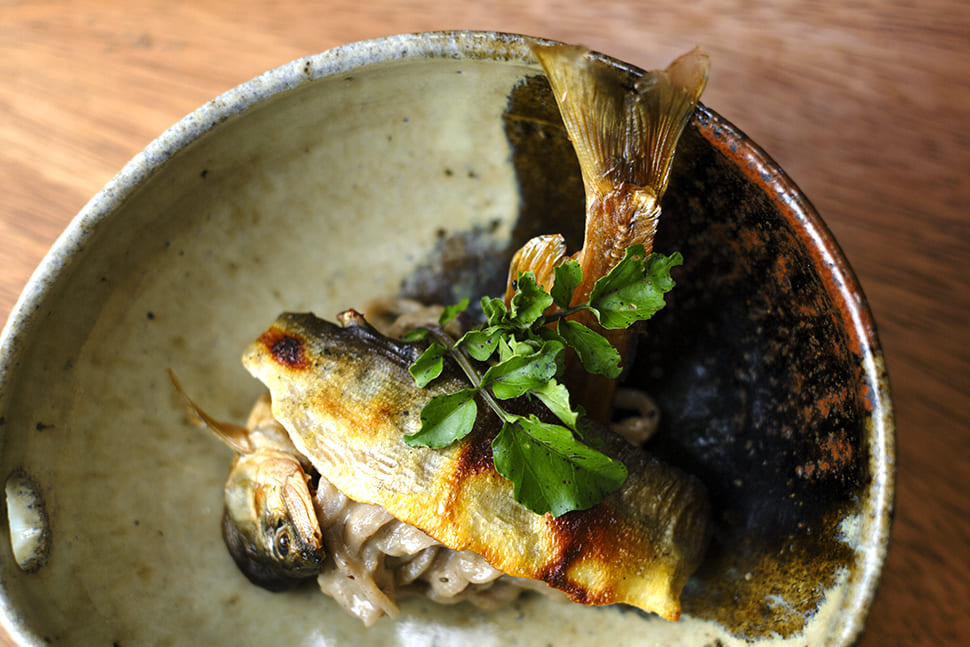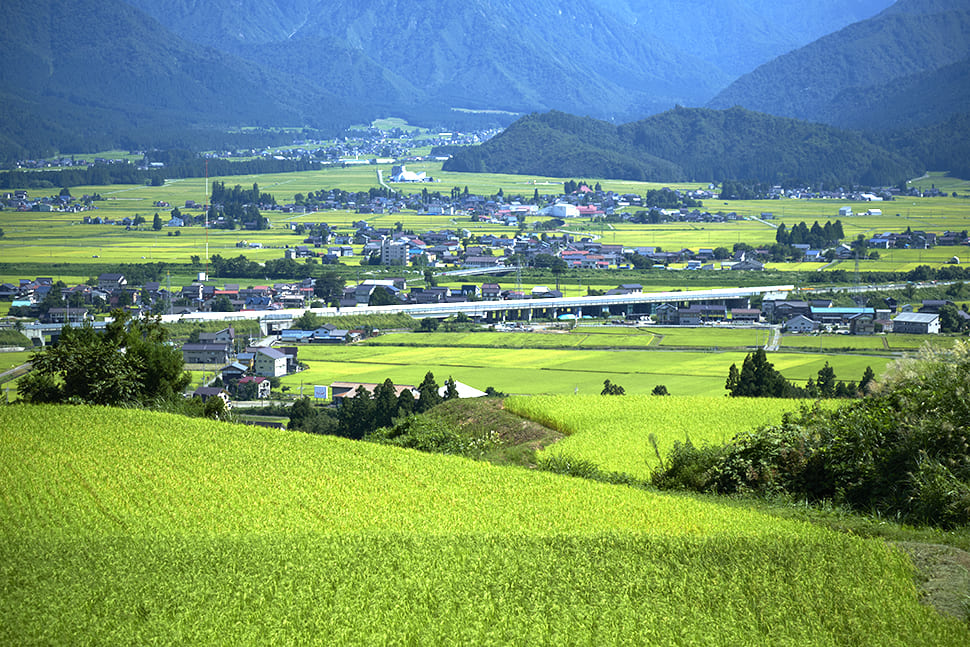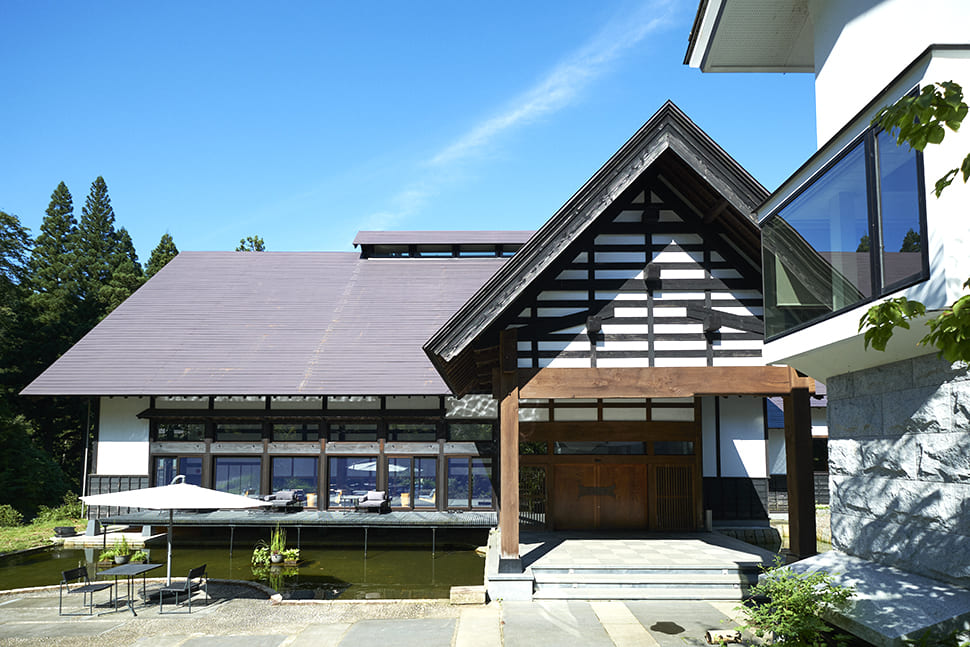DESTINATION RESTAURANTS
June 20, 2022
Satoyama Jujo
By TAEKO TERAO
PHOTO:KOUTAROU WASHIZAKI
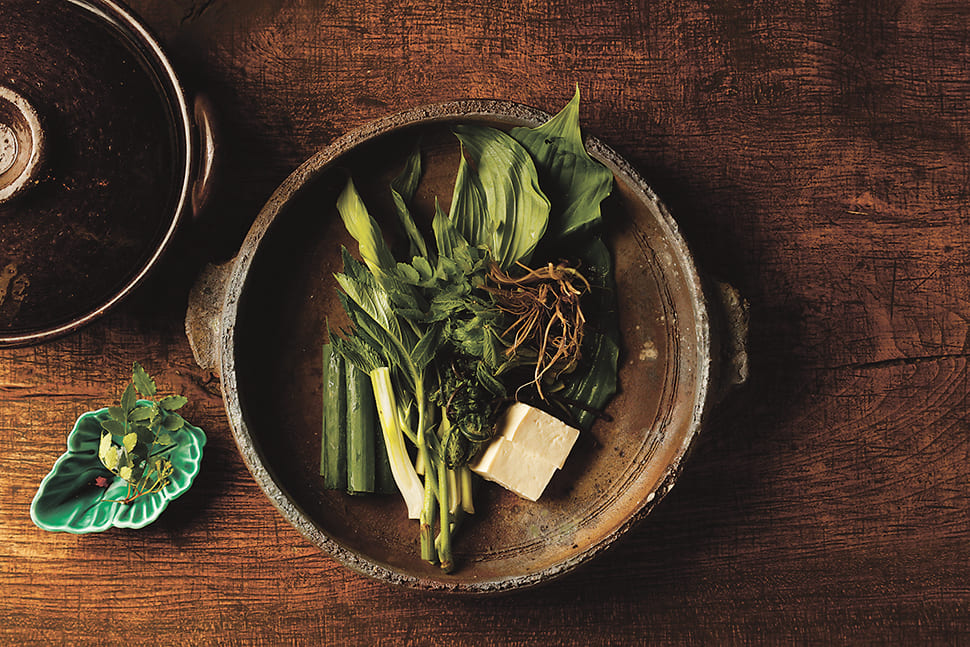
The Osawa district of Minami-uonuma in Niigata Prefecture has long been known for its outstanding rice. The area is to rice farming what the Burgundy estate Domaine de la Romanee-Conti is to wine. The hot spring resort Satoyama Jujo overlooks Osawa’s rice paddies. Occupying a 150-year-old dwelling made entirely of lacquered zelkova wood, the reception hall sits beside the resort’s own paddies, and beginning each October, guests are served the new crop of local rice, including some planted and harvested by resort staff.
“Our main dish is white rice steamed in clay pots,” chef Keiko Kuwakino said proudly. The water used to wash and cook the rice is Osawa spring water. It is a dish that distills the bounty of this area, where people live in harmony with the mountain forests surrounding them. At dinner, guests are served a taste of the rice the moment it is removed from the heat, still al dente. It is then allowed to sit with the lid on, softening, developing sweetness and forming a fragrant crust on the bottom. In this way the flavor and texture of the rice change over the course of the meal.
In between, heritage vegetables and other local ingredients shine. At one meal, fried kajika river frogs were served as an appetizer, skewered on refreshingly fragrant spicebush branches picked in the woods by Kuwakino. It is just one example of the flavors contributed by berries, flowers, nuts and herbs the chef picks in the woods and farm fields. The charcoal-grilled ayu (sweetfish) was served alongside house-made soba noodles with a sauce of pounded ayu bones and liver reminiscent of Italian pasta. The “Nakajima kinchaku eggplant with bell pepper and leek flowers” featured a firm-fleshed traditional eggplant variety that holds its shape when cooked, served in a savory sesame-vegetable broth and garnished with chopped peppers and leek flowers. This was followed by nodoguro (blackthroat seaperch) from Sado Island grilled over charcoal, pork steaks from a pig breed called kiramugi ton, clay-pot steamed rice, and dessert. Not once did the meal use the broth of konbu and bonito flakes so common in contemporary Japanese cooking. Instead, the dishes relied on the richly varied flavors that can be extracted from local vegetables and fish. This, too, is the bounty of the Minamiuonuma area.
Since she began working at Satoyama Jujo eight years ago, Kuwakino said, she has learned much from her mentor, whose regular job is driving a taxi. She has learned when and where to harvest wild mountain vegetables, how to prepare them, and how to observe them from the time they sprout in spring until they wither back into the earth. She has learned to distinguish the male and female varieties of certain plants, and knows it is important to leave the males unpicked for the sake of future harvests. She has learned about wild grapes, chestnuts and other fruits and nuts that can be preserved by drying, salting, submerging in alcohol or smoking. This is wisdom that has been passed down for generations in a region traditionally isolated by deep winter snows. There are hamlets nearby whose entire population starved to death in the winter during the Edo Period. This restaurant poses anew the question of what it means to eat, and what delicious food really is.
■Sustainable Japan Magazine (Sustainable Japan by The Japan Times)
https://sustainable.japantimes.com/magazine/vol17/17-05
■satoyama~Authentic Japan (Sustainable Japan by The Japan Times)
https://sustainable.japantimes.com/satoyama/101
■The Japan Times
https://www.japantimes.co.jp/life/2022/11/06/food/destination-restaurants-satoyama-jujo-sanaburi/
